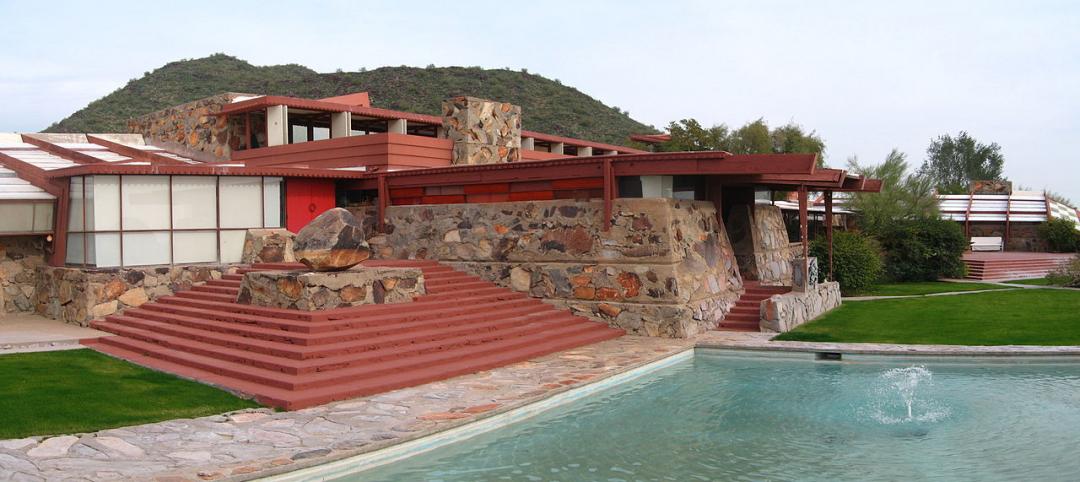The National Council of Architectural Registration Boards (NCARB) has launched the first phase of its revised certification path for architects without a degree from a program accredited by the National Architectural Accrediting Board (NAAB). The NCARB Certificate facilitates reciprocal licensure among the 54 U.S. jurisdictions and several countries.
Through this alternative, architects licensed in a U.S. jurisdiction who hold an architecture-related degree can satisfy the Certificate’s education requirement by documenting two times the Architectural Experience Program’sTM (AXPTM) requirements (7,480 hours). A separate certification option for U.S. architects without an architecture-related degree will launch in spring.
These education alternatives replace a previous option known as the Broadly Experienced Architect (BEA) Program, which cost $5,000 plus transcript review fees. Additionally, these revised paths will lead to a shorter evaluation process, and will be offered at no additional charge to active NCARB Record holders. The changes were adopted by a vote of the NCARB membership in June 2016 at its Annual Business Meeting.
“This revised path recognizes the value of the initial license and practical experience while maintaining a rigorous, yet inclusive, option for architects seeking NCARB certification,” said NCARB President Kristine A. Harding, NCARB, AIA.
U.S. architects interested in earning an NCARB Certificate through this path must meet the following requirements:
- Have at least three years of continuous licensure in any U.S. jurisdiction without disciplinary action.
- Hold a bachelor’s degree in an architecture-related program.
To learn more about the benefits of NCARB certification, visit www.ncarb.org/certificat
Related Stories
| Dec 22, 2014
What Building Teams can learn from home builders' travails
Commercial and residential construction can be as different as night and day. But as one who covered the housing industry for nearly a decade, I firmly believe AEC firms can learn some valuable lessons from the trials and tribulations that home builders experienced during the Great Recession, writes BD+C's John Caulfield.
| Dec 22, 2014
Skanska to build Miami’s Patricia and Phillip Frost Museum of Science
Designed by Grimshaw Architects, the 250,000-sf museum will serve as an economic engine and cultural anchor for Miami’s fast-growing urban core.
| Dec 22, 2014
Studio Gang to design Chicago’s third-tallest skyscraper
The first U.S. real-estate investment by The Wanda Group, owned by China’s richest man, will be an 88-story, 1,148-ft-tall mixed-use tower designed by Jeanne Gang.
| Dec 19, 2014
Zaha Hadid unveils dune-shaped HQ for Emirati environmental management company
Zaha Hadid Architects released designs for the new headquarters of Emirati environmental management company Bee’ah, revealing a structure that references the shape and motion of a sand dune.
| Dec 19, 2014
Chicago Architecture Biennial to hold 'Lakefront Kiosk Competition'
The first Chicago Architecture Biennial will take place from October 2015-January 2016, with a theme of "The State of the Art of Architecture."
| Dec 18, 2014
Frank Lloyd Wright's Taliesin West to be recreated—with LEGO
Containing more than 180,000 LEGO bricks in 11 colors and 120 different shapes, the model measures eight by four feet and is made entirely of standard LEGO parts.
| Dec 18, 2014
11 new highs for tall buildings: CTBUH recaps the year's top moments in skyscraper construction
The Council on Tall Buildings and Urban Habitat cherrypicked the top moments from 2014, including a record concrete pour, a cautionary note about high-rise development, and two men's daring feat.
| Dec 18, 2014
International Parking Institute and Green Parking Council collaborate with GBCI
The new collaboration recognizes importance of sustainable parking facility design and management to the built environment.
| Dec 18, 2014
Top 10 sports facilities of 2014: Designboom ranks the year's best projects
The list includes some of the year's epic stadiums, such as World Cup Stadium Arena de Amazonia in Manaus, Brazil, and smaller projects, like the Spordtgebouw Sports Centerin the Netherlands.
| Dec 18, 2014
In response to ultra-open and uber-collaborative office environments
Susan Cain’s bestselling 2012 book, "Quiet: The Power of Introverts in a World That Can’t Stop Talking" has made an impact on how we understand our current workforce, recognizing that at least one-third of the people we work with are introverts, writes SRG Partnership's Susan Gust.
















